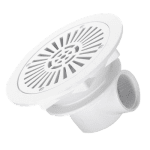Swimming pool design and construction
Designing and constructing a swimming pool involves a comprehensive process that integrates aesthetics, functionality, safety, and engineering considerations. Whether for residential, commercial, or institutional use, the design and construction phases are crucial to creating a pool that enhances the property’s value, provides recreational enjoyment, and meets specific user needs. Here’s an in-depth exploration of swimming pool design and construction, covering key elements, design considerations, construction phases, materials, and inspirational ideas.
Key Elements of Swimming Pool Design and Construction (Swimming pool design and construction)
- Site Assessment and Planning:
- Site Analysis: Evaluate the property’s terrain, soil conditions, topography, and existing structures to determine the optimal location and size for the pool.
- Zoning and Permits: Obtain necessary permits and comply with local zoning regulations, setback requirements, and safety codes before beginning construction.
- Design Phase:
- Conceptual Design: Collaborate with architects, landscape designers, and pool contractors to develop a conceptual design that considers the client’s preferences, budget, and aesthetic goals.
- Technical Drawings: Create detailed construction drawings and plans that include pool dimensions, shape, depth profiles, circulation systems, plumbing layouts, and electrical requirements.
- Structural Considerations:
- Engineering Requirements: Engage structural engineers to assess load-bearing capacities, soil stability, and potential impact on surrounding structures, ensuring structural integrity and safety.
- Waterproofing: Implement effective waterproofing strategies for pool shells, foundations, and surrounding areas to prevent leaks and protect against groundwater infiltration.
Construction Phases of Swimming Pool Construction (Swimming pool design and construction)
- Excavation and Site Preparation:
- Excavation: Dig the pool area according to approved plans, considering excavation depths, sloping requirements, and soil removal logistics.
- Site Access: Ensure sufficient access for construction equipment, materials delivery, and waste removal during the excavation phase.
- Pool Shell Construction:
- Materials: Choose construction materials such as reinforced concrete, fiberglass, or vinyl liners based on design requirements, durability, and maintenance considerations.
- Formwork and Reinforcement: Install formwork and reinforcement structures to support the pool shell and withstand water pressure, soil movement, and environmental factors.
- Plumbing and Electrical Installation:
- Plumbing Systems: Install circulation pumps, filters, skimmers, and plumbing lines to ensure efficient water circulation, filtration, and chemical distribution.
- Electrical Wiring: Integrate lighting, heating systems, automation controls, and safety features in compliance with electrical codes and safety standards.
- Finishes and Features:
- Interior Finishes: Apply pool finishes such as tiles, plaster, aggregate, or vinyl liners to create a durable, smooth, and aesthetically pleasing surface.
- Water Features: Incorporate waterfalls, fountains, jets, or spa elements to enhance visual appeal, ambiance, and recreational options within the pool environment.
Materials and Technology (Swimming pool design and construction)
- Pool Finishes:
- Tile Options: Choose from ceramic, glass mosaic, or natural stone tiles for their aesthetic appeal, durability, and resistance to chemicals and water.
- Plaster Finishes: Use plaster finishes with additives for smoothness and color customization, providing a cost-effective option for pool interiors.
- Decking and Surroundings:
- Hardscaping: Select materials such as concrete pavers, natural stone, wood decking, or composite materials for pool decks and surrounding areas based on aesthetics, durability, and maintenance requirements.
- Safety Features: Install slip-resistant surfaces, handrails, and safety barriers to enhance user safety and comply with building codes and regulations.
- Energy-efficient Systems:
- Heating and Cooling: Incorporate energy-efficient heat pumps, solar thermal systems, or geothermal heating/cooling systems to maintain comfortable water temperatures year-round.
- LED Lighting: Install LED lighting fixtures both in and around the pool for energy efficiency, longevity, and enhanced nighttime ambiance.
Inspirational Swimming Pool Designs (Swimming pool design and construction)
- Resort-style Retreat:
- Create a luxurious pool design with infinity edges, sunken lounges, and integrated spa features surrounded by lush landscaping and panoramic views.
- Family-friendly Oasis:
- Design a family-oriented pool with shallow lounging areas, water slides, and play features, complemented by durable and safe materials for active use.
- Modern Minimalism:
- Achieve a sleek and minimalist pool design with clean lines, monochromatic finishes, and minimalist landscaping for a contemporary architectural statement.
Maintenance and Operational Considerations (Swimming pool design and construction)
- Water Quality Management: (Swimming pool design and construction)
- Filtration Systems: Maintain efficient filtration systems to remove debris, microorganisms, and contaminants, ensuring clean and safe pool water.
- Chemical Balance: Regularly test and adjust water chemistry parameters (pH, chlorine levels) to prevent algae growth, scale buildup, and waterborne illnesses.
- Routine Maintenance: (Swimming pool design and construction)
- Cleaning Protocols: Establish cleaning schedules for pool surfaces, filters, skimmers, and surrounding areas to uphold hygiene standards and prolong equipment lifespan.
- Inspections: Conduct periodic inspections of pool equipment, structural integrity, and safety features to identify and address maintenance needs promptly.
- Swimming pool design and construction involves careful planning and execution to create a functional and aesthetically pleasing aquatic space. Whether you’re considering an in-ground or above-ground pool, several key factors come into play.
- 1. Planning and Design
- The first step in swimming pool construction is to develop a comprehensive design plan. This includes selecting the shape, size, and depth of the pool, taking into account the available space and the intended use. Popular designs include rectangular, oval, and freeform pools, each offering unique benefits. Incorporating features like waterfalls, lighting, and surrounding landscaping can enhance the overall appeal.
- 2. Site Preparation
- Once the design is finalized, the site must be prepared. This involves clearing the area, marking the layout, and ensuring proper drainage. Excavation is then carried out to create the pool’s structure, followed by the installation of plumbing and electrical systems to support filtration, heating, and lighting.
- 3. Construction Materials
- Selecting high-quality materials is crucial for durability and aesthetics. Options include concrete, fiberglass, and vinyl liners. Each material has its own advantages in terms of cost, maintenance, and design flexibility.
- 4. Finishing Touches
- Finally, the finishing touches, such as tiling, coping, and decking, are added. This stage not only completes the pool’s look but also ensures safety and functionality.
Conclusion (Swimming pool design and construction)
Designing and constructing a swimming pool requires meticulous planning, expertise in engineering and design principles, and adherence to safety and regulatory standards. By integrating innovative materials, energy-efficient technologies, and aesthetic considerations, swimming pool designs can enhance property value, provide recreational enjoyment, and create inviting outdoor environments for residential, commercial, or institutional settings. Whether creating a tranquil retreat, a family-friendly oasis, or a modern architectural statement, a well-executed swimming pool construction project transforms outdoor spaces into functional and aesthetically pleasing aquatic environments that enrich the overall quality of life for users.


















